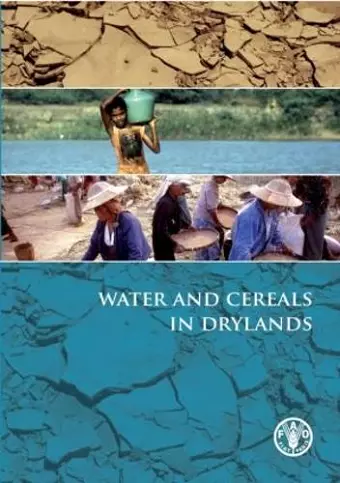Water and Cereals in Drylands
B A Stewart author P Koohafkan author
Format:Hardback
Publisher:Taylor & Francis Ltd
Published:13th Nov '08
Currently unavailable, and unfortunately no date known when it will be back
This hardback is available in another edition too:
- Paperback£22.99(9781844077083)

This topic is central to contemporary concerns for more sustainable agricultural development. This is a well-written and clear book, with excellent data, tables and illustrations, addressing issues of water use, climate change, poverty and small farmers. The authors are highly respected and complement each other's acknowledged international expertise.'
Professor Jules Pretty, University of Essex, UK
'This useful guide shows that there is great potential for increasing the productive capacity of smallholder farms in the drylands via a range of water management techniques, from the simple to the more complex. Providing a theoretical grounding and a practical guide, Water and cereals in the drylands will appeal to workers on-location as well as students, researchers and policymakers.'
New Agriculturalist
Cereals are by far the most important source of food throughout the world, either directly for human consumption or indirectly in the form of animal feed for livestock products consumed as food. With world population set to rise to nine billion by 2050, there is an urgent need to examine ways to increase cereal production. Indeed recently the future of cereal production and consumption has been complicated by rising energy prices and the economics of biofuels, which are competing for the use of cereals. One way to increase cereal production is by the more effective use of marginal dryland areas.
This book reviews the potential for increased cereal production in drylands across the world, from the USA, Australia and Southern Europe to Asia and Africa. It describes how improved water conservation, water harvesting and investment options can contribute to this, and suggests policies for the more efficient use of existing natural resources in order to lessen the dependence of agriculture on further irrigation development.
'Would be well used to inform the discussion in scientific papers.'
Blair M. McKenzie, Cambridge University Press, 2009.
'[The book] describes how improved water conservation, water harvesting and investment options can contribute to ths, and suggests policies for the more efficient use of existing natural resources in order to lessen the dependence of agriculture on futher irrigation development.'
Biotechnology, Agronomy Society and Environment, 2009.
ISBN: 9781844077090
Dimensions: unknown
Weight: 430g
120 pages